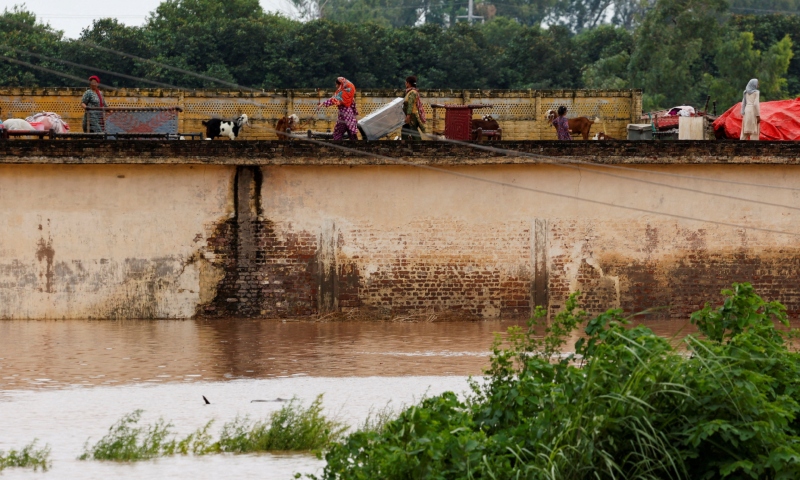LAHORE: Authorities on Tuesday night resorted to breaching protective dykes to safeguard populated areas and key infrastructure as the Chenab River witnessed a record-high flood, while the Ravi and Sutlej continued to inundate vast swathes of Punjab.
At Marala headworks, the Chenab’s flow crossed one million cusecs — the highest ever recorded. By Wednesday, the peak deluge had passed Khanki headworks, where the National Disaster Management Authority (NDMA) warned the structure was under serious threat as flows exceeded one million cusecs against a design capacity of 800,000.
Explosives were used to breach at least one dyke in order to relieve pressure, with residents evacuated beforehand.
The Punjab government late Tuesday requisitioned the army to assist rescue and relief operations in six districts — Sialkot, Kasur, Okara, Sargodha, Faisalabad and Lahore. Military teams were later deployed to other affected parts of the province as well.
Cross-border flows
Officials said the extraordinary flooding stems from both torrential monsoon rains and large volumes of water being released by India from upstream dams in Jammu and Kashmir. An Indian government source told Reuters that all gates of major dams had been opened and some 200,000 cusecs may be discharged downstream.
Islamabad confirmed it had received warnings from New Delhi — the third since Sunday — and subsequently issued flood alerts for the Chenab, Ravi and Sutlej.
Both Pakistan and India have faced weeks of destructive rains and flooding, with Pakistani Punjab — home to half of the country’s 240 million people — particularly vulnerable.
Read More: India shared flood warning through diplomatic channels, not IWT: FO
People uprooted
Downstream of Marala and Khanki, floodwaters surged through Sialkot, Narowal, Wazirabad and Gujrat districts. In Narowal, Federal Minister Ahsan Iqbal’s home district, a 225,000-cusec torrent from India inundated large areas, including the Kartarpur Sahib gurdwara complex, where dozens of stranded pilgrims were later rescued.
Streams and nullahs from the Pir Panjal range in Jammu have also swollen to dangerous levels, compounding the deluge.
At Qadirabad headworks, Chenab’s flow was recorded at 935,000 cusecs on Wednesday. Lahore braced for peak flooding at Shahdara by nightfall, with estimates of 150,000–200,000 cusecs.
The Sutlej, meanwhile, has remained in high flood for over 10 days, with more than 200,000 cusecs at Gandapur, inundating parts of Kasur and Okara and forcing evacuations in Vehari and Bahawalnagar. The river ultimately merges with Chenab at Uch Sharif in Bahawalpur.
Panjnad at risk
Attention now turns to Panjnad, where Chenab joins the Indus. Authorities fear flows could swell to 1.2 million cusecs in Rahim Yar Khan district — a level not seen even during the catastrophic 1992 floods.





